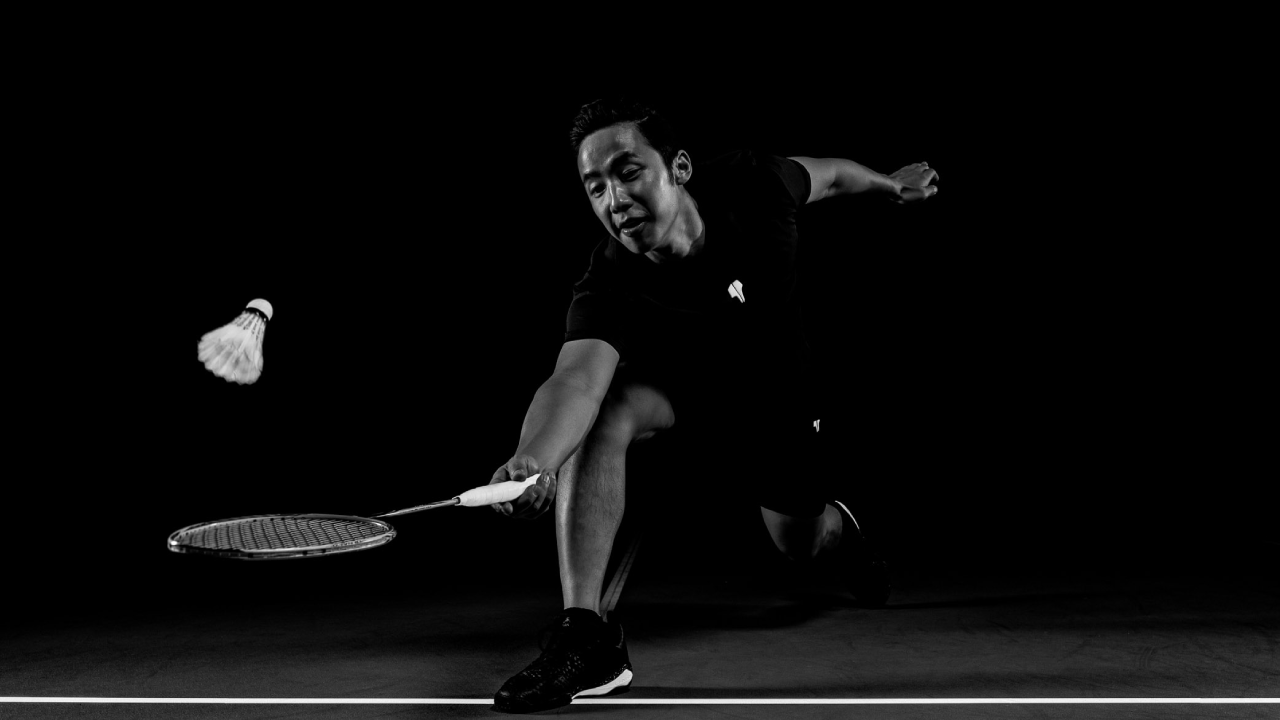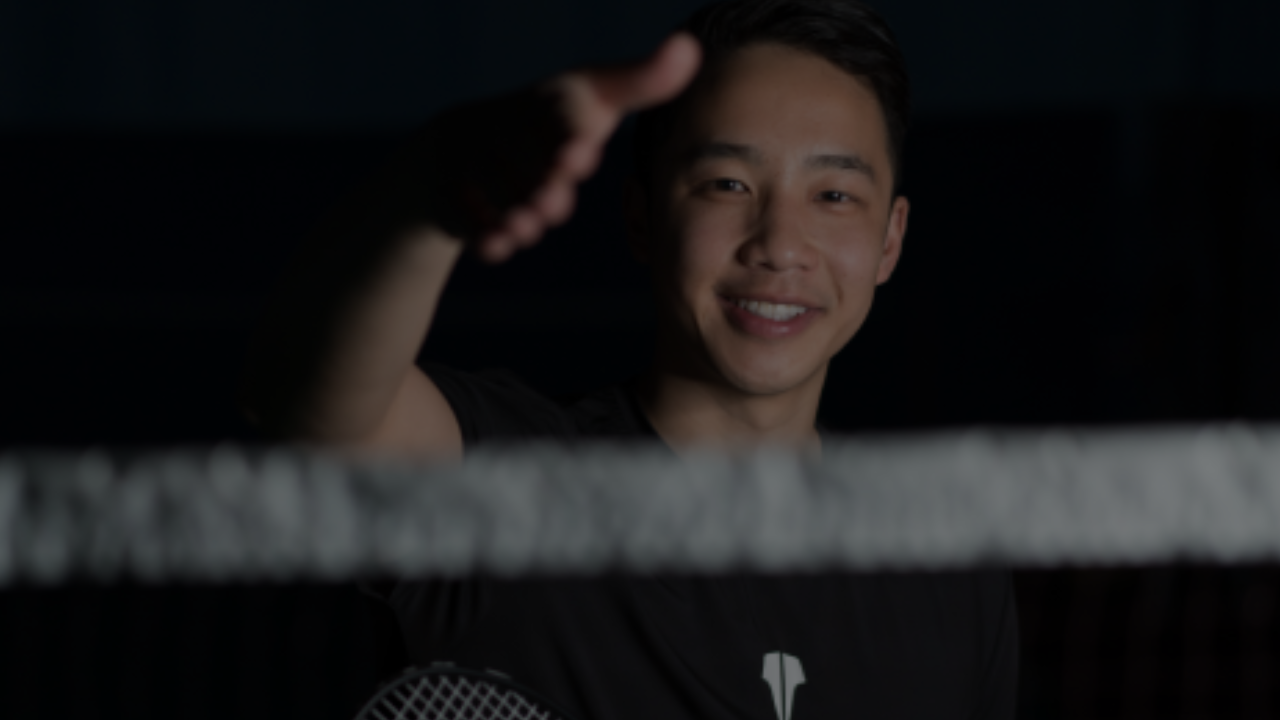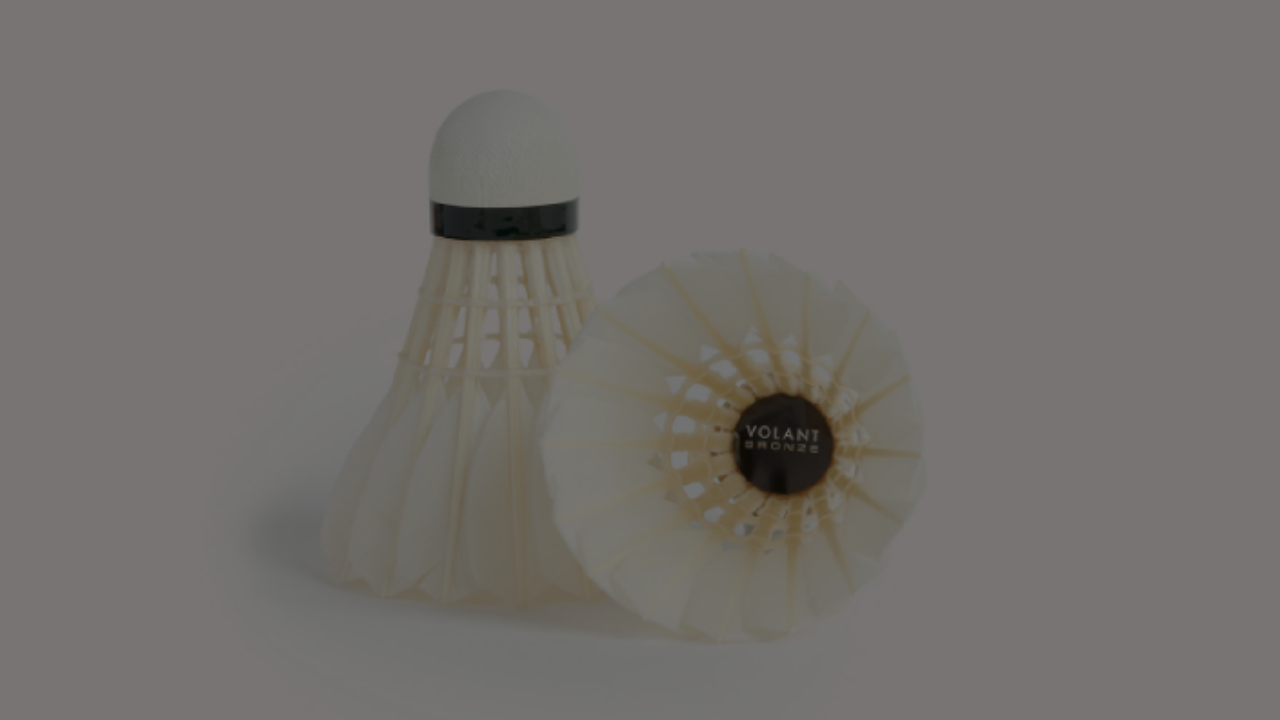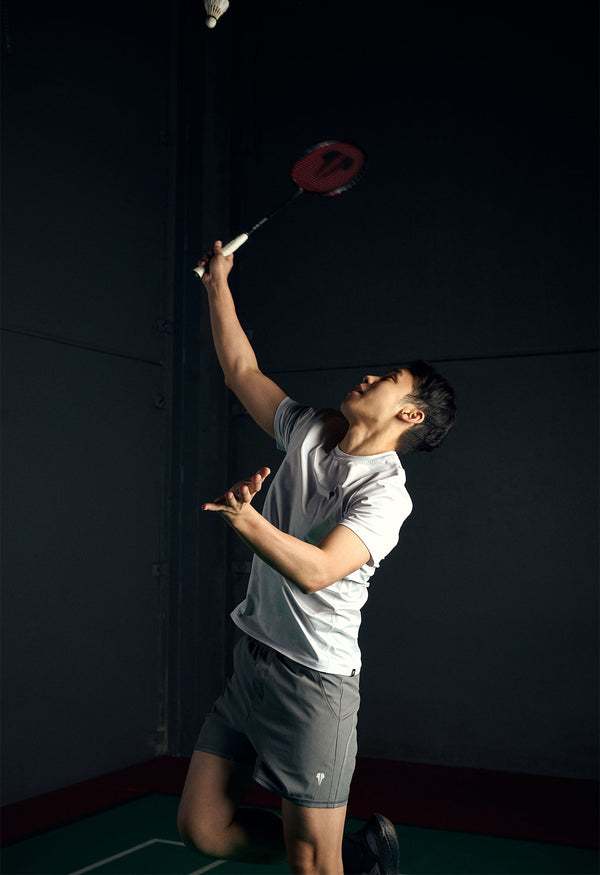Your Cart is Empty

October 23, 2022 7 min read
Not only does it look insane but there's something sexy about an iron wall of a badminton defense that just won't give in.
Sending the shuttle back on a totally out-of-reach-shot is almost as satisfying as a clean-cut smash. Especially, seeing the opponent feeling so sure their shot is a winner that they don’t even bother to recover, and just watch in appreciation, almost celebrating the point…
…Until, out of nowhere, the deepest of lunges, or a last-minute dive, pulls the rug out from underneath them.
I find that defense in badminton is an underappreciated art because even if players aren’t evenly matched, the game starts with zero points for both parties and on the right day, that's enough to make a difference.
Instead of the smashing machine we usually admire, the underdog can do a lot better than it might seem on paper by forcing frustration and impatience from the other player.
In this article, you and I will dive into the defensive shots in badminton along with practical ideas we can take away from watching the world’s best defensive players in action. The best place for us to start is with a brief overview of the standard defensive shots to make sure we are on the same page.
If you’ve been playing for a while, you’re probably already familiar with lifts, blocks,clear shots, and how they can get us out of trouble for a moment.
Lifts sometimes feel like the only option we have if we reach the shuttle late and close to the net when the angle is steep. It offers the opponent a chance to attack in exchange for us staying in the rally.
Clear shots help take the pressure off as we move the opponent to the backline but, again, we may exchange that privilege for giving the attack away. Clears can also be used as a surprise sneak attack if the opponent is close to the net.
Blocks tend to save smashes but return a short net shot that can cause us trouble if we aren't careful.
…And finally, the most satisfying defensive shot, which isn't mentioned nearly as much as I'd like. It doesn't appear to have an official name, but Greg and Jenny over at Badminton Insight heard it named the Brab so I’ll stick with that for now.
It’s that cross-court shot with high speed sent to the diagonally opposite corner, almost as an “uncontrolled” reaction to a smash or another hard shot. This clip dives into all the details you need to know.
It's easy to perform if the shuttle flies just right as the swing and motion fit naturally, but the downside is that it doesn't seem to happenthat often in games.
With this short overview of defensive shots in badminton out of the way, let’s look at what we can learn from the best elite players.
We all have our favorite players but in general, I think we can agree that these players are among the best at defending:
I enjoy defense, so my curiosity got the better of me and I geeked out on a bunch of content to see if I could figure out what makes these players better at defense than many other elite players.
Instead of a long list you’d probably forget all about on the court, I narrowed it down to three core items: footwork and fast reactions, diving, and the mental game.
The first step in a good defense is choosing the right shot at the right time to either win the point directly or set yourself up well for the follow ups, so let’s start there.
The most common example I can think of is how a weak backhand might save this shot but set your opponent up to kill the return easily, whereas an aggressive around-the-head shot could offer a better chance at surviving the follow up too.
The backhand is sexy and we could work on improving it but a smarter decision might be to practicefootwork as that will help with other game scenarios as well. Many of us (myself included) use the backhand more often than we should instead of better anticipating the opponent’s next move, reaching the shuttle earlier, and avoiding needing the backhand in the first place.
In this example, Viktor Axelsen breaks down how he avoids too much movement with the arm and wrist, but lets the footwork do the magic when blocking smashes.
In theory, with the right footwork, every shot is a breeze to defend but that’s easy to say and nearly impossible to execute to perfection all the time. That’s where anticipating the opponent can help us predict what’ll happen so we can react early.
In fast net duels, half the work is done using theright stance and ready position before we even react as we only have a second or two between the shuttle reaching either side of the court. If we have to spend some of that time moving our racket in place, there’s barely any time to find the empty space on the opponent’s side or get creative in other ways.
If the opponent puts us under pressure with fast net play, we might move them back with lifts to slow down the intensity.
The challenge with lifts is that it’s easy to lift short to the mid-court, instead of a strong lift to the back, and we’ll send the shuttle directly into the opponent's racket and give them the benefit of not having to move. In this next example, we’ll see how a non-elite player lifts compared to the world champions Aaron Chia and Soh Wooi Yik.
Speaking of shots, aiming for a place that’s awkward to reach (e.g. near the racket arm or body) helps make it difficult for the opponent to return the shuttle. Elite players have developed trick shots specifically as a solution for this. They look amazing and effortless but unfortunately, we don’t get into match situations where we need them that often.
Before we get into the psychology of defense, let’s look at everyone’s favorite defense topic: diving. Dives look great in highlight reels but it's an expensive way to save the rally since recovery is hard.
The best defensive players have mastered when to dive, whennot to dive, and how to recover fast enough to be ready for the following shot… but diving is kinda like the backhand. Those that are comfortable doing it might do it a little too often, even though it isn’t always the best choice to win the rally, as we see here in Vittinghus’ heroic attempt.
3. Defense psychology
I find that the psychological effects a good defense can have on your opponents are often forgotten. It’s possible to psych them out into mentally giving up and losing belief that it’s possible to win, just look at the Japan Open final between Axelsen and Vitidsarn, and Vitidsarn’s facial expression in this clip:
When the opponent gets tired it’s tempting for them to feel impatient and want to finish the rally quickly. Smashing again and again takes a lot of energy so if you know that your defense is strong enough to withstand it, you might be able to turn the tide by letting them tire themselves out and make unforced errors. Here’s an example of how Hiroyuki Endo and Yuta Watanabe do exactly that like the defense kings they are.
Another psychological aspect is being able to withstand mental pressure on court, like being behind by ten points in the world championship finals as the gold-winning team (Aaron Chia and Soh Wooi Yik) from Malaysia proved when they won.
In an interview with BWF, their coach Rexy Mainaky described that an important part of their strategy was the mental aspect of the game. There surely must have been a lot more going on under the hood but I took notice of two particular points he made after the victory:
“It was about playing long rallies and not to get rushed, if you rush at receiving you will be in trouble.”
And
“I tried to reduce their unforced errors, to minimise their negative thoughts.”
These two key points perfectly sum up the mental power a defense can have on our game and I encourage you to read the full interview in the link above.
Aske writes about badminton on his blog which is intended for adult players seriously wanting to improve their game. If you’re interested in defense, consider reading aboutpositions in badminton next.
Jeff is an ex-international badminton player who represented Australia at the Commonwealth Games (twice as a player & once as a coach), World Championships, All England Championships and multiple Thomas and Sudirman Cups. He was the Australian National Coach, Senior State Head Coach and is the co-founder of Volant badminton & The Badminton Podcast. Jeff is extremely passionate about building the worldwide badminton community & showing the world how incredible our sport really is.
Comments will be approved before showing up.

December 30, 2025 2 min read
When badminton rackets clash, it’s not the brand or price that determines which one breaks—it’s physics. Angle, direction, and speed of impact often mean one racket absorbs the full force while the other escapes without damage, even at the highest levels of play.

August 20, 2025 2 min read

July 17, 2025 2 min read
Shuttlecocks aren’t cheap, and replacing them constantly stings the wallet. With a little care, though, you can stretch their lifespan and keep your game flying high. Whether you’re using feather or nylon, here’s how to make them last—plus why Volant Badminton’s options are worth your shot.
Be the first to know when a new blog post comes out!
Curated articles, tips and advice, tailored to the sport of badminton.
Sign up and enjoy 10% off your first order.

Join the Volant Community and improve your game!
*Discount code excludes shuttlecocks